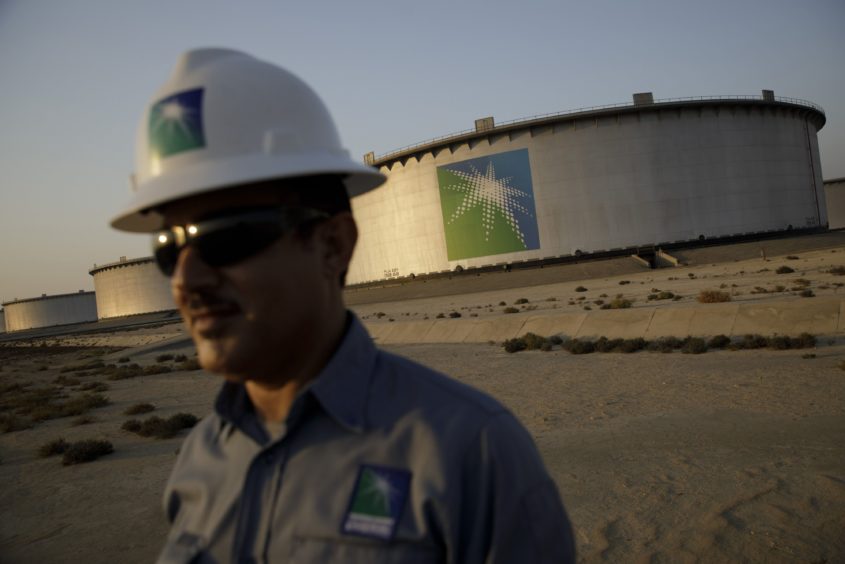
It’s been at least three years in the making, but it’s just dawned on investors what a share sale by Saudi Aramco would do to the Arab world’s biggest stock exchange.
The Tadawul All Share Index almost wiped out this year’s gains after the kingdom’s efforts to line up banks for the sale spurred market players to realize the initial public offering really is happening. About 85% of the index’s stocks fell.
“All local index constituencies should suffer outflows,” said Slava Breusov, a senior analyst with the emerging and frontier equities team at AllianceBernstein in New York.
The IPO is part of Crown Prince Mohammed bin Salman’s efforts to modernize the economy and diversify the nation’s revenue from oil, including turning the bourse into a gateway for foreign investment.
The kingdom spent years relaxing rules for foreign traders and aligning its market with global peers, culminating in its inclusion in MSCI Inc. and FTSE Russell’s developing-nations equity benchmarks.
The world’s most profitable company is planning a listing in Riyadh, and potentially another internationally, although the timings of either haven’t been announced.
The energy giant is considering first selling around a 1% stake through a listing on the Saudi stock exchange, with the possibility of offering another 1% on the local bourse at a later date, one person with knowledge of the matter said.
“Barring some sort of liquidity injection by the Saudi government, I would expect an Aramco local listing to be a drain on the rest of the market as Aramco’s behemoth size crowds out other local investments,” said Adam Choppin, an investment officer at FIS Group in Philadelphia.
The stock index trimmed losses of as much as 2.5% to 1.4% at the close.
What It’s Worth
Prince Mohammed in 2016 valued Aramco at about $2 trillion, which means floating 1% would be valued at about $20 billion. That would account for about 4% of the market.
To be sure, Bloomberg Intelligence values Aramco at $1.1 trillion because of the likelihood that Saudi Arabia will need to limit its output, and other analysts have said about $1.5 trillion. Brent crude at about $60 a barrel isn’t enough to fund the the kingdom’s budget, which needs prices at $80 a barrel or more.
But even if Aramco’s worth is lower than the kingdom’s estimates, it would still dwarf other equities.
Its profit in the first half of the year was more than four times the combined earnings of 170 Saudi publicly traded companies that reported earnings, according to data compiled by Bloomberg.
And assuming the company’s valuation is about $1.5 trillion, a 1% listing would put Aramco at 5.2% of the main stock index, according to Mohamad Al Hajj, an equities strategist at EFG-Hermes in Dubai.
That would dilute the dominance of other market heavyweights, such as Al Rajhi Bank, which currently accounts for 15% of the index. The equity would receive roughly $1.9 billion in inflows from MSCI and FTSE passive trackers alone, almost a tenth of total foreign inflows into the Saudi bourse so far this year.
“Considering the size of Aramco’s IPO and its expected weight in indexes, the company will have a significant effect not only on the local gauge, but also on global indexes,” said AllianceBernstein’s Breusov.
Recommended for you
